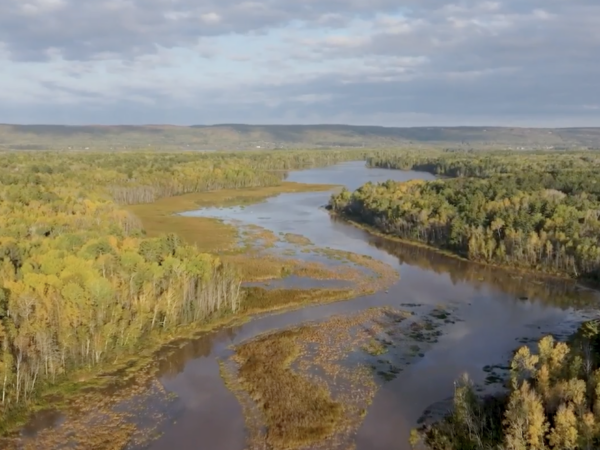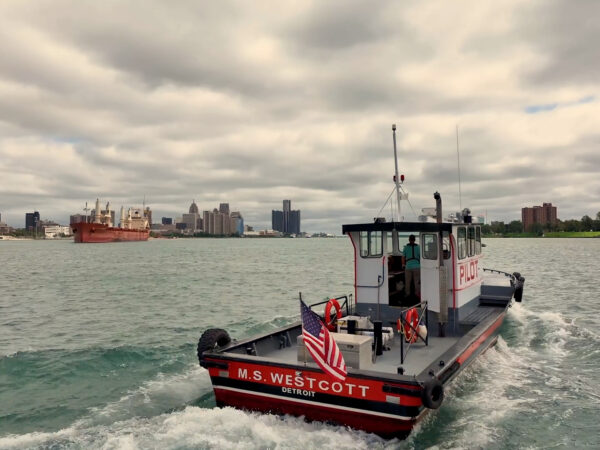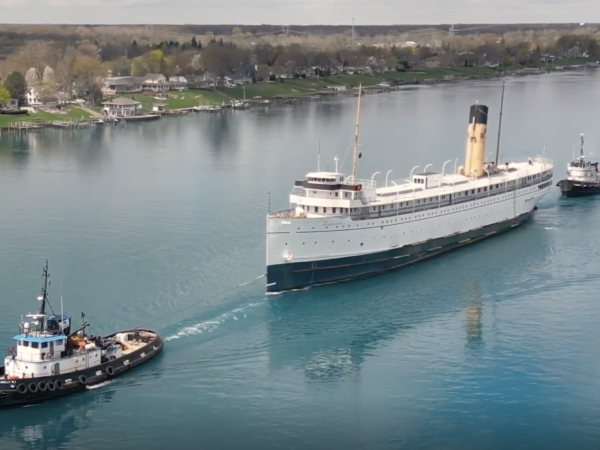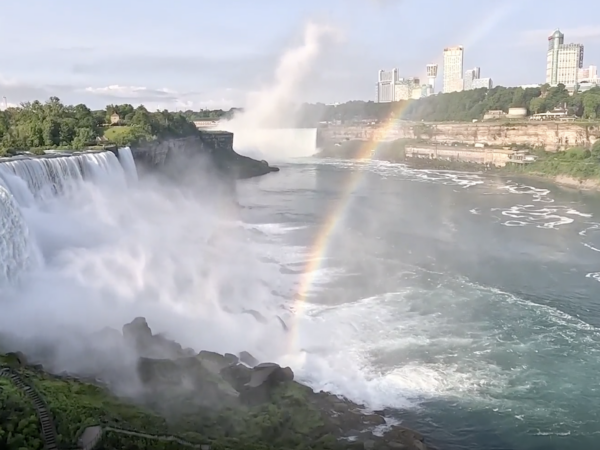IN THIS EPISODE:
In the latest episode of Great Lakes Now, “Ancient Rocks and Tender Fruit,” come along for a rock hunting adventure along the Great Lakes shoreline, plus a look at how climate change in the Niagara region is creating a need for farmers to find adaptive solutions for water scarcity.
GREAT LAKES LEARNING:
Explore this month’s hands-on lesson plans designed to help your middle schoolers understand the Great Lakes — all at home or in the classroom. They’re aligned to education standards AND free to download.
Lesson Plans
Have a question about the Great Lakes or life in the region?
Ask Great Lakes Now, and if we can answer it, we might loop it into our coverage so others can learn too.
Submit Your Question
When to Watch?
Check your local station for when Great Lakes Now is on in your area.
Premieres on DPTV
Monday, August 28, at 7:30 PM
STATIONS CARRYING THE SERIES
DPTV
Detroit, Michigan
WEAO
Akron, Ohio
WNEO-TV
Alliance, Ohio
WCML-TV
Alpena, Michigan
WDCP-TV
Bad Axe, Michigan
BCTV
Bay County, Michigan
WBGU-TV
Bowling Green, Ohio
WNED-TV
Buffalo, New York
WCMV-TV
Cadillac, Michigan
WTTW-TV
Chicago, Illinois
WVIZ-TV
Cleveland, Ohio
WKAR-TV
East Lansing, Michigan
WQLN-TV
Erie, Pennsylvania
WCMZ-TV
Flint, Michigan
WGVU-TV
Grand Rapids, Michigan
WPNE-TV
Green Bay, Wisconsin
WGVK-TV
Kalamazoo, Michigan
WHLA-TV
La Crosse, Wisconsin
WHA-TV
Madison, Wisconsin
WNMU-TV
Marquette, Michigan
WHWC-TV
Menomonie-Eau Claire, Wisconsin
WMVS-TV
Milwaukee, Wisconsin
WCMU-TV
Mt. Pleasant, Michigan
WLEF-TV
Park Falls, Wisconsin
WNIT-TV
South Bend, Indiana
WCNY-TV
Syracuse, New York
WGTE-TV
Toledo, Ohio
WDCQ-TV
University Center, Michigan
WNPI-TV
Watertown, New York for Ontario signal
WPBS-TV
Watertown, New York for U.S. signal
WHRM-TV
Wausau, Wisconsin
Finding Treasure on Great Lakes Beaches
SEGMENT 1 | Van’s Beach, Leland, MI
Chris Cooper loves the Great Lakes. He’s a self described “Rock Hound” who says the rocks he finds on the beach can tell a lot about our geological history. “So Petoskey Stone is a Devonian Period coral that grew, I think about 360 million years ago,” says Cooper. “And back when all of the water was saltwater and we were located more down towards the equator down by Florida.”
His passion for rock collecting led Cooper to create a Facebook group more than a decade ago called “Great Lakes Rocks and Minerals” that now has around 250,000 members! “It started off slow, you know. It was a group where people could come get their rocks and minerals identified, where they’re located, where they found them.”
On a sunny day in June, Cooper is combing the shallow waters off Van’s Beach near Leland, Michigan, with a homemade rock hunting device. It’s a bucket with the bottom replaced by a piece of plexiglass. But, he will tell you the best rocks are found deep underwater. Cooper recently strapped on scuba gear and dove into the chilly waters of Lake Superior off Michigan’s Keweenaw Peninsula to dig up a beautiful agate stone bigger than his fist.
Joining Cooper on this rock hunting expedition is artist and viral content creator Geo Rutherford. While she appreciates the beauty of rocks, Rutherford is here for something else: plastic. “You see the debris that’s kind of lined up here? That’s the debris line where you’re going to find more recent plastic. Depends on the beach,” says Rutherford. “Some of them are obviously much richer in their plastic content. This one’s really clean. I’m really impressed. I’ve only found a few, like, little microplastics.”
Rutherford takes the bits of plastic she finds on Great Lakes beaches and creates art with it. She fills glass test tubes with colorful chunks of plastic, sand and other material to give people a snapshot of what a particular beach is made of. “I’m trying to get a full picture of the beach to give readers an impression of what that beach holds and kind of the spirit of that beach,” says Rutherford. “Now, obviously my favorite thing in that series is plastic and finding plastic, but a picture of the beach can go beyond just plastic, or rocks or beach glass or anything like that. It’s everything.”
The exact number of rockhounds across the Great Lakes is unknown, but it’s safe to say there are thousands! They flock to Lake Superior for colorful Sodalite-rich Syenite or Yooperlite stones that glow at night. There’s Quartz around Lake Huron. Sandstone at Lake Erie. Granite and Limestone at Lake Ontario.
“To me it’s kind of a modern day treasure hunt,” says Cooper. “You never know what you’re going to end up with at the end of the day, or even when you get home. Sometimes it takes, you know, polishing it on your equipment to reveal the beauty of it.”
Here is other Great Lakes Now work on rocks and other things found on shorelines:
Great Lakes microplastics concentrations exceed safe levels for wildlife
Plastic Permanence: Research shows plastic becoming part of Great Lakes lakebed
Niagara Farmers Need Water?
SEGMENT 2 | Lincoln, Ontario
Farmers in Lincoln, Ontario, are developing solutions to help adapt to new realities of water scarcity caused by climate change and erratic weather conditions. Come along to learn from farmers and town officials who are rethinking best practices around agriculture and infrastructure.
David Hepple, a farmer in Lincoln, Ontario, has learned creative solutions to help himself and other farmers to combat erratic weather conditions in the Niagara region where he lives. The biggest challenge as of late? Drought. To help solve the water scarcity problem, Hepple redesigned the main water supply system at the farm, and while it helped, it still proved insufficient.
Hepple said that on average during the prime growing season, each tree needs about four gallons of water per day. That supply of water adds up quickly when each acre has about 200-300 trees in it. With weather becoming increasingly difficult to predict, keeping the trees healthy and adequately watered can be a challenge.
Conditions like heat waves, droughts, early frost and prolonged rain can hinder the growth of fruit trees and cause headaches for the farmers as they try to figure out next steps. “Well, we certainly demonstrated the impact of drought in 2016. That was a drought year. Basically, it reduced the crop size by about 25 percent. But it also decreased the crop value by about 30 percent,” Sarah Marshall, manager of the Ontario Tender Fruit Growers, said.
The most frustrating and ironic part of the situation in the Niagara region, is that water is all around. The farmers are seeing the abundance of water but aren’t able to get it to their crops. Farmers and local politicians have been fighting for two decades to try and get a route irrigation system to help fluently connect the water source to the farms, yet the plan requires a lot of money and time to coordinate and implement the changes. “I don’t think we’ve got a whole lot of time to fool around. If we continue to have major droughts and we don’t have water to support our farmland, then there just isn’t going to be food in the future. It’s going to be so costly that it’s going to be even more of a hardship than it is now,” Sandra Easton, Lincoln Town Mayor, said.
Here is other Great Lakes Now work on underinvestment in water infrastructure:
Water woes loom for Michigan suburbs, towns after decades of disinvestment
Michigan’s 20th Century water systems too big for its shrinking city populations
The Catch: Benton Harbor’s lead pipes and the plan to replace them
The Catch: News about the Lakes You Love
SEGMENT 3 | Ohio, Lake Erie, Great lakes watershed
This segment – The Catch – in our award-winning PBS program will keep you in the know. This month, stories about the Supreme Court decision regarding the EPA and wetland regulations, Lake Erie algal bloom dangers and the lasting impacts of the Great Lakes Critical Program Act of 1990.
First, a story about the US Supreme Court decision that came out in May 2023 about the regulatory protections of wetlands. The decision changes and impacts wetlands throughout the country, including here in the Great Lakes, where some states have strong wetland protections in place, and others are lacking. Zaria Johnson, Reporter/Producer for Ideastream Public Media, said that regardless of size and continuous surface connection, wetlands provide filtered water. They help redirect some of the negative pollutants found in other bodies of water, and direct them elsewhere. Pollutants like pesticides, fertilizer and storm runoff could potentially end up in larger bodies of water if the wetlands cannot actively do their job. “And obviously, when we think about wetlands and regulating wetlands, there’s a tie-in to water quality and surrounding waterways and to the Great Lakes,” Johnson said. “So the story is really diving into how the decision might affect wetlands in Ohio and how Ohio might need to shift its regulatory practices in order to pick up the slack from the federal government.’
Next, an ongoing and serious concern is back in Lake Erie: harmful algal blooms. The blooms exist throughout the Great Lakes, but are especially pervasive in the western basin of Lake Erie. The blooms cause concern because they are bacterial and can release toxins once they pop at the surface of the water. The toxins are dangerous to humans and animals and can become airborne. Numerous studies have been done to investigate what can be done to stop or lower the spread of these blooms.
“The U.S. EPA and the state of Ohio have agreed that they will lower the phosphorus content that gets into the lake by 40 percent over the next several years,” Lester Graham, of Michigan Radio said. While the phosphorus that comes from fertilizer is one part of the pollutants that create the blooms in the lake, there are other causes too.
Lastly, as part of the Great Lakes Now Collaborative ongoing series, “Refresh,” Great Lakes Student Journalist Jada Vasser takes a look at the Great Lakes Critical Programs Act of 1990 and the impact it has had on the lakes. The legislation gave the Great Lakes region specific standards of water quality that needed to be met in order for the lakes to be used for things like fishing, recreation and more. Prior to the passage of the 1990 legislation, access had been significantly reduced because of the poor water quality and pollution in the water. Using some of the same ideas listed in the Great Lakes Water Quality Agreement of 1978, it forced the U.S. and Canada to come together to create terms they would uphold to continue to enforce higher standards of water quality. “Having the Great Lakes Critical Act for the people that live in the Great Lakes states is super important because now we can use these lakes for numerous things … Before the Clean Water Act was actually named, the Clean Water Act, the Great Lakes were just kind of ignored, I would say. We didn’t really have specific things that we needed to regulate on,” Vasser said.
Featured Articles
Digital Credits
The Great Lakes Now Series is produced by Rob Green and Anna Sysling.





















